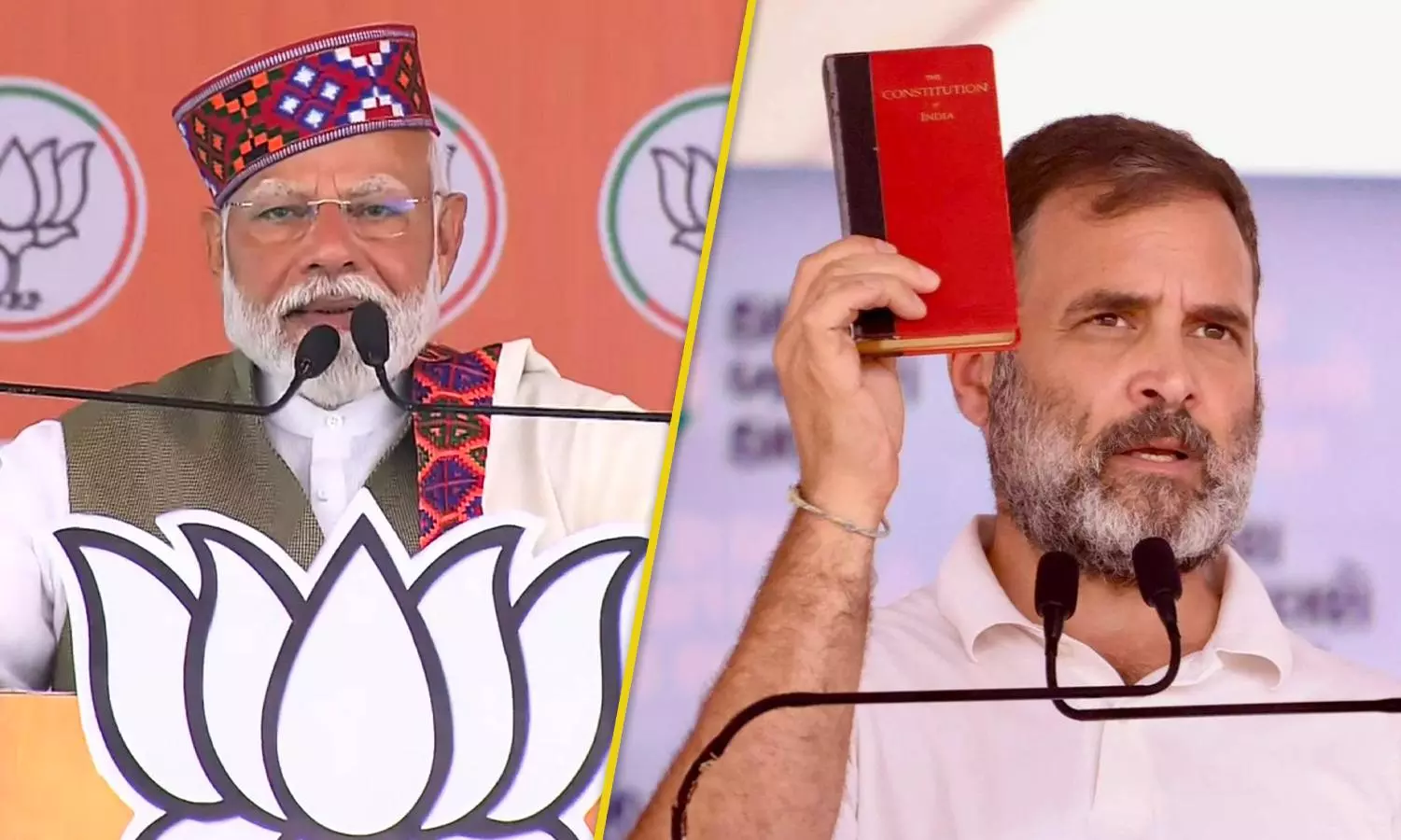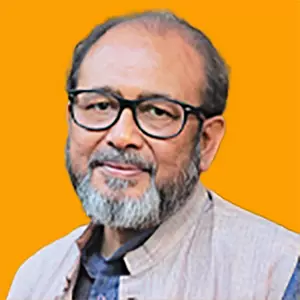
- Home
- India
- World
- Premium
- THE FEDERAL SPECIAL
- Analysis
- States
- Perspective
- Videos
- Sports
- Education
- Entertainment
- Elections
- Features
- Health
- Business
- Series
- In memoriam: Sheikh Mujibur Rahman
- Bishnoi's Men
- NEET TANGLE
- Economy Series
- Earth Day
- Kashmir’s Frozen Turbulence
- India@75
- The legend of Ramjanmabhoomi
- Liberalisation@30
- How to tame a dragon
- Celebrating biodiversity
- Farm Matters
- 50 days of solitude
- Bringing Migrants Home
- Budget 2020
- Jharkhand Votes
- The Federal Investigates
- The Federal Impact
- Vanishing Sand
- Gandhi @ 150
- Andhra Today
- Field report
- Operation Gulmarg
- Pandemic @1 Mn in India
- The Federal Year-End
- The Zero Year
- Science
- Brand studio
- Newsletter
- Elections 2024
- Events
- Home
- IndiaIndia
- World
- Analysis
- StatesStates
- PerspectivePerspective
- VideosVideos
- Sports
- Education
- Entertainment
- ElectionsElections
- Features
- Health
- BusinessBusiness
- Premium
- Loading...
Premium - Events

A deep-dive into the election speeches – the themes and keywords – of the PM and his Opposition rivals
People in all but 57 Lok Sabha constituencies spread across the states of Uttar Pradesh (13), Punjab (all 13), West Bengal (9), Bihar (8), Odisha (6), Himachal Pradesh (all 4), Jharkhand (3) and the lone seat of Chandigarh have cast their votes.
Although these seats where voting will take place on June 1 may or may not eventually impact the final verdict, the principal campaign points of the two primary players, the ruling Bharatiya Janata Party (BJP) and the Opposition parties, are settled and unlikely to alter because it too late to introduce new issues.
Contrasting narratives
Consequently, this is an appropriate occasion to examine the subjects that the adversaries have focussed on by scrutinising the speeches of the most important leaders and the subsequent follow-up campaign on social media.
As far as the BJP is concerned, it is apt to peruse keywords that found frequent mention in Prime Minister Narendra Modi’s speeches.
In contrast, instead of scrutinising the speeches of one leader in the Opposition rank, it is more prudent to look for common themes that have been raised by them, even if in separate speeches and different occasions.
Then and now
Before tracing the most frequent keywords used by Modi, it needs to be noted that he secured the first mandate in 2014 with a litany of ‘promises’. Before looking into separate pledges, listing the popular slogans is in order.
Starting with the ubiquitous punchline, ‘Acche din aane wale hain’ ('better days are here to come'), the slogans had the self-assuring line, ‘Abki baar Modi sarkar’ ('a Modi government this time') to the professional-group-specific slogan, ‘Bahut hua kisaano pe atyachar’ ('enough of atrocities on the farmers') followed by a repeat of the Abki baar assertion.
There was also the questionable quasi-religious chant which started from Varanasi but spread across India – ‘Har har Modi, ghar ghar Modi’.
The Prime Minister also coined the slogan drawing on his vocabulary from his Gujarat days – ‘Sabka saath, sabka vikas’ while promising jobs, specifically mentioning that one crore jobs would be generated for the country’s youth if voted to power.
Modi also promised to check soaring prices, create Smart Cities (without mentioning the fate of those cities outside the scheme) and ending manual scavenging among other assurances.
Poll narrative of 2019
If ‘promises’ were the main carriers of the mandate that Modi got into office in 2014, in 2019 he was re-elected after listing out the ‘performance(s)’ of his government with the spotlight on the two instances when Indian security forces ventured into Pakistani territory to neutralise terrorist groups – first in September 2016 and later in 2019.
The theme of hyper-nationalism generated by the narrative spin given after the strike on what was stated to be a terrorist facility in Balakot was neatly packaged along with deliveries under the socio-economic welfare programmes.
The contentious misadventure of demonetisation was not spoken about, just as the failure to eradicate the parallel economy or black money remained out of the electoral narratives.
Six 'M's at centre stage
Paradoxically, after 10 years in office, this year’s electoral themes neither emphasised ‘promises’ as the campaign came close nor did it showcase the government’s and the Prime Minister’s ‘performance’.
Instead, as the campaign began warming up, Modi introduced the Six Ms that have been the primary thrust of his campaign in this election: Manmohan (Singh), Mangalsutra, Mutton (also Machhli), Madarsa, Mughal and finally Mujra.
There were two contentious and specific accusations against the former premier: One, in a speech at a meeting of the National Development Council in December 2006, he had said that Muslims have the first claim to the nation’s resources. Two, the UPA government has wanted religious-based budget allocation to the tune of 15 per cent.
Both claims were debunked – the first in the form of a clarification which was quickly unearthed. This issued by Manmohan Singh’s PMO immediately after a controversy erupted after his speech was inappropriately reported by some newspapers and TV channels. Insofar as the second claim was concerned, it was dismissed as a complete disinformation.
Modi’s prejudices
Essentially, all the M-words that Modi used were synonyms for Muslims, a word he could not use without blatantly violating the Model Code of Conduct, which prohibits spreading ill-will on the basis of religious identity.
Each of the M-words, including the last one used – Mujra – were also used as dog whistles to whip up prejudice against Muslims. The effort was to connect his political adversaries with Muslims – like he did with by stating that only the Mughals and people of that mentality eat mutton or fish during the religious period of Navratras.
From the time low electoral turnout after the first phase of polling on April 19 send jitters down the spine of BJP leaders, Modi whipped up a campaign that tried to evoke insecurity among Hindus. In this phase he tried to establish extra proximity between his political opponents and Muslims.
Opposition's plank
In contrast, Opposition leaders, especially of the INDIA bloc, focussed on the issue of the Constitution being liable to be replaced by a new one in the event of Modi being elected for the third time in succession.
What initially appeared an incredulous possibility conceptualised by Rahul Gandhi and thereafter other Opposition leaders got traction with the people.
Modi setting the target of 370 seats for the BJP and 400+ plus for the NDA also lent weight to the theory that the ruling party was aiming for a two-third majority so that they could change the Constitution at will. Eventually, this fear settled over many, especially those from the underprivileged sections.
Along with that, the Opposition also conveyed to people that the BJP was principally against reservations given contradictory statements made by the leaders of the BJP and the Rashtriya Swayamsevak Sangh in the past.
Spotlight on Constitution
While Modi remained with a storyline he has repeatedly narrated, the Opposition mounted a novel attack and brought in the Constitution as a major issue. The people were told by various opposition leaders that safeguarding the Constitution was as much their duty, as a necessity.
This is the first occasion that the Constitution has been introduced as an entity in an election campaign.
Numerous Opposition leaders, especially those from the Congress, contended that this election is about the future of India and to safeguard constitutional values, in existence in the country since Independence.
In contrast to Modi’s whistle blowing speeches, where the attempt was to raise the fear of minority appeasement among the majority community, Rahul Gandhi stuck to reminding people that the BJP had always wanted to change the Constitution.
Idea of India
Although his statement that the BJP always wanted to “tear and throw away” the Constitution might have been a tad exaggerated, its aim was not to arouse passions of one group of people against another like the Modi-BJP duo has attempted.
Related to this, the leaders have spoken about the idea of India as conceptualised at the dawn of the Republic.
However, although these issues appeared to have resonated in public meetings, the extent of the electoral backing for this idea will be known only on June 4.
(The Federal seeks to present views and opinions from all sides of the spectrum. The information, ideas or opinions in the article are of the author and do not necessarily reflect the views of The Federal.)


